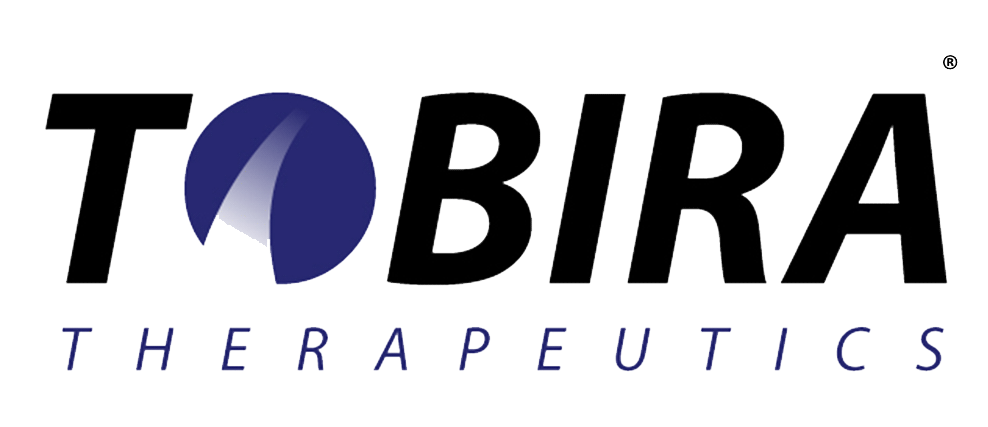
Tobira’s Cenicriviroc Reduces Inflammation and Fibrosis in Animal Models of Chronic Liver and Kidney Disease Including NASH
Print 27 June 2016

SOUTH SAN FRANCISCO, Calif.--(BUSINESS WIRE)--Tobira Therapeutics, Inc. (NASDAQ: TBRA), a clinical-stage biopharmaceutical company focused on the development and commercialization of novel treatments for liver and inflammatory diseases, today announced that data from multiple animal models showed that cenicriviroc (CVC), a potent inhibitor of two chemokine receptors, displayed potent anti-inflammatory and anti-fibrotic activity in multiple organs including liver and kidney. The results from this study have been published in the journal PLOS ONE(http://dx.doi.org/10.1371/journal.pone.0158156).
“These data show that CVC displayed significant anti-inflammatory and anti-fibrotic effects across a range of in vivo models, including non-alcoholic steatohepatitis (NASH), liver and kidney fibrosis models. These findings support CVC’s anti-inflammatory and anti-fibrotic mechanism of action, and are further substantiated by results from a diet-induced NASH model, where CVC-treated animals had significantly less liver fibrosis and decreased lobular inflammation and hepatocellular ballooning, the hallmark features of NASH, relative to untreated animals,” said Scott Friedman, M.D., chief, Division of Liver Diseases, Icahn School of Medicine at Mount Sinai, and lead author. “The comprehensive and consistent preclinical data demonstrating the potent anti-inflammatory and anti-fibrotic effects of CVC enabled its clinical development in patients with NASH and fibrosis.”
“We are excited about the publication of these translational data which substantiate CVC’s potential to address a serious medical condition like fibrotic NASH. With the top-line primary analysis results of our Phase 2b CENTAUR study expected in the third quarter of 2016, this is a transformative time for Tobira as we continue to build our NASH program and prepare for Phase 3,” said Eric Lefebvre, M.D., chief medical officer of Tobira.
About Cenicriviroc (CVC) and Non-alcoholic Steatohepatitis (NASH)
CVC is an oral, once-daily, potent immunomodulator that blocks two chemokine receptors, CCR2 and CCR5, which are intricately involved in the inflammatory and fibrogenic pathways in NASH that cause liver damage and often lead to cirrhosis, liver cancer or liver failure. Tobira believes this novel approach will establish CVC as both a single-agent and as a cornerstone treatment in multi-therapy regimens for NASH, for which there is currently no approved drug.
CVC is currently being evaluated in Tobira's fully enrolled global Phase 2b CENTAUR study (identifier NCT02217475) and the company expects to announce the study's primary endpoint in the third quarter of 2016. CENTAUR is comparing CVC to placebo in 289 patients with NASH and liver fibrosis. CVC has been granted Fast Track status in patients with NASH and liver fibrosis, the patient population at highest risk of progression to cirrhosis. The CENTAUR study includes surrogate endpoints identified as suitable for registrational studies in findings of an FDA-AASLD workshop reported in Hepatology and in use in current Phase 3 studies. To date, over 600 subjects have been dosed in completed studies with CVC, including 115 HIV-infected subjects on treatment for up to 48 weeks. Additionally, CVC treatment was associated with improvements in metabolic parameters and a safety profile comparable to placebo in patients with non-alcoholic fatty liver disease and NASH in the interim analysis of the ongoing ORION Phase 2 study.
NASH is an emerging health crisis impacting 3% to 5% of the United States population and 2% to 4% globally. It is the fastest growing cause of liver cancer and liver transplant in the United States due to the rise in obesity. Additionally, this population is estimated to be three to five times larger than the size of the population with hepatitis C in the United States.
About Tobira Therapeutics
Tobira is a clinical-stage biopharmaceutical company focused on the development and commercialization of therapies to treat liver disease, inflammation, fibrosis and HIV. The company's lead product candidate, cenicriviroc (CVC), is a first-in-class immunomodulator and dual inhibitor of CCR2 and CCR5 being evaluated for the treatment of non-alcoholic steatohepatitis (NASH), primary sclerosing cholangitis (PSC) and as an adjunctive therapy to standard of care in HIV. Tobira's pipeline also includes evogliptin, a selective DPP-4 inhibitor, which it plans to develop for NASH in combination with CVC. Learn more about Tobira at www.tobiratx.com.
Forward-Looking Statements
This release contains forward-looking statements made pursuant to the safe harbor provisions of the Private Securities Litigation Reform Act of 1995. Forward-looking statements reflect management's current knowledge, assumptions, judgment and expectations regarding future performance or events. Although management believes that the expectations reflected in such statements are reasonable, they give no assurance that such expectations will prove to be correct and you should be aware that actual results could differ materially from those contained in the forward-looking statements. Forward-looking statements are subject to a number of risks and uncertainties including, but not limited to, the company's clinical development of its product candidates; the potential timing and outcomes of clinical studies of product candidates undertaken now or in the future; the ability of the company to timely source adequate supply of its product candidates from third party manufacturers on whom the company depends; the company's limited cash reserves and its ability to obtain additional capital on acceptable terms, or at all; the company's ability to successfully progress, partner or complete further development of its programs; the uncertainties inherent in clinical testing; the timing, cost and uncertainty of obtaining regulatory approvals; the company's ability to protect the company's intellectual property; competition; changes in the regulatory landscape or the imposition of regulations that affect the company's products; and other factors listed under "Risk Factors" in the company's other filings with the Securities and Exchange Commission.
All Portfolio
MEDIA CENTER
-
The RMI group has completed sertain projects
The RMI Group has exited from the capital of portfolio companies:
Marinus Pharmaceuticals, Inc.,
Syndax Pharmaceuticals, Inc.,
Atea Pharmaceuticals, Inc.

